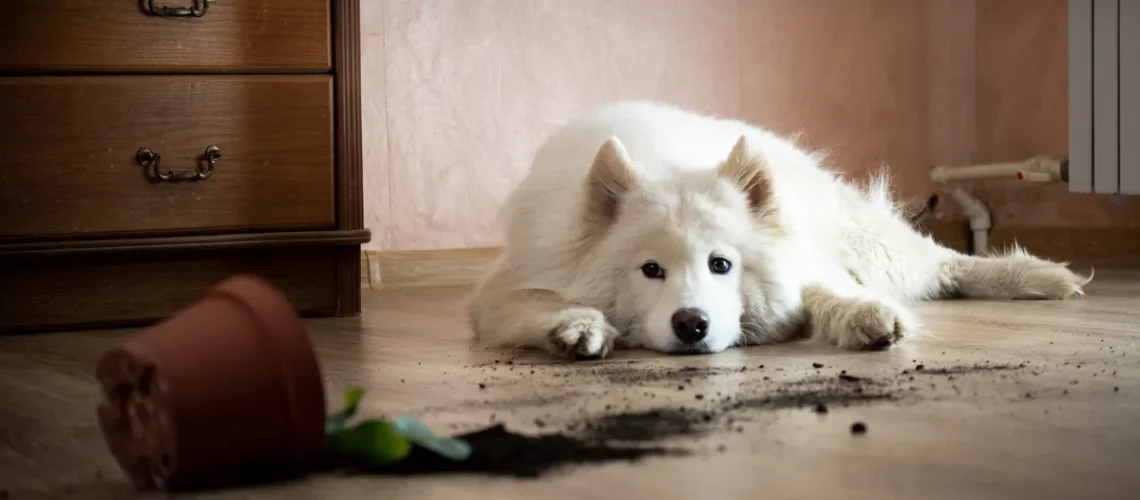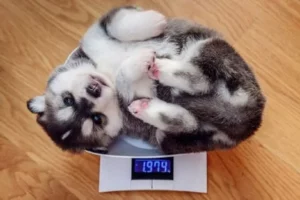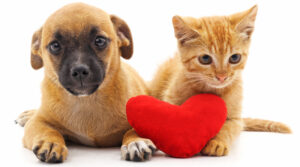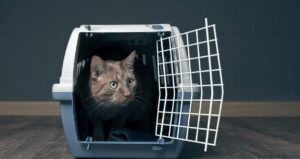The consumption of a number of household items and substances can be harmful to pets such as dogs and cats, and in some cases, they can even kill them. By being aware of the most prevalent health risks present in many households with pets, you can protect your pet’s well-being.
HAZARDS IN THE KITCHEN
Foods
Many foods that are completely healthy for humans could be dangerous or even fatal to dogs and cats. To be safe, don’t give your pet any of the following foods:
| Coffee grounds | Chocolate | Grapes/Raisins |
| Tea | Avocado | Onion/Garlic |
| Fatty Foods | Yeast Dough | Salt |
Xylitol-containing chewing gum, and breath fresheners
Garbage should never be placed within reach of a pet because decomposing food contains mold or bacteria that could cause food poisoning.
Preparing food poses a special danger to pets
Teflon coatings in cooking pans are particularly irritating to birds. Cookware should never be left unattended while being used on the stove, and be sure to keep your bird in a location other than the kitchen since non-stick coating vapors can be fatal in nature. Additionally, near windows, mirrors, and ceiling fans, flying birds are in danger. Regular wing trimming can stop birds from soaring into danger and escaping into the open air.
There are numerous products in every home that could be harmful to both people and animals. Learn about potential risks so that you can avoid them before they become an issue. The proper precautions and ongoing attention will keep you and your pet safe.
Supplies for cleaning
Numerous household cleaners are safe to use with cats and dogs. The secret to safe use, however, is to read and obey the product’s instructions for safe use and storage. For example, if the label advises you to “keep pets and children away from the area until dry,” observe the warning to avoid any potential health hazards. When used appropriately, bleach-containing products can safely disinfect a variety of domestic surfaces, but when used improperly, they can also burn severely if swallowed, cause an upset stomach, drooling, vomiting, or diarrhea, and irritate the respiratory system when inhaled at high concentrations. Furthermore, skin burns from concentrated solutions can be extremely painful. Cats are known to be particularly sensitive to certain chemicals, such as phenols, and some detergents can cause a similar reaction. It’s recommended to keep all cleaning supplies in their original packaging or in a container that is properly marked and tightly closed, and to keep them in a safe cabinet that is out of pets’ reach.
Insecticides
Before using any kind of pesticide in the vicinity of your pet, read and comply with the label directions just like you would with household cleaners. Additionally, it is advisable to avoid using flea and tick treatments that are intended “for use on dogs only” on cats or other animals because doing so could have significant or even fatal consequences. To ensure that these products are safe for your pet to use, always consult your veterinarian.
HAZARDS IN THE BATHROOM
Medication
Human medical issues can be treated with drugs that can make pets severely ill.
“The best advice is to never give your pet medication unless
your veterinarian has prescribed it.”
The following medications should generally be kept out of the reach of animals, tightly closed, and stored in a safe cabinet above the counter:
- Aspirin, ibuprofen, or naproxen are examples of non-steroidal anti-inflammatory medications
- Acetaminophen
- Vitamins and diet pills
- Cold-Relief Drugs
- Antihistamines
- Drugs on Prescription
- Mood stabilizers
Sundries and Soaps
Toothpaste, sunblock, and bath and hand soaps should all be kept away from your dogs. They might make you feel sick, throw up, or have diarrhea. To avoid your pets eating treated toilet bowl water that could upset their digestive systems, keep toilet lids tight.
Harmful Chemicals
The water in toilets is often frozen during the winter, so many people put antifreeze in them. It is fatal for dogs and cats to drink antifreeze. Keep your toilet lids down and your chemicals out of reach of pets if you use these chemicals during the winter. Additionally, use caution when visiting friends or relatives with your pet, as you never know what chemicals they may be using.
Alluring Cleaning Agents
The cleansers that are most frequently found in bathrooms are usually convenient discs or tablets that fit into the toilet bowl or attach to the side of the toilet. Despite the fact that these cleaners frequently color the water blue and may seem harmful for pets, you can relax knowing that your pet won’t likely suffer any negative effects from drinking treated water on a daily basis. The quantity that your pet consumes matters, just like it does with most items that can be hazardous. Since the toilet bowl cleaner’s chemicals are diluted in water and present in these tablets or discs, more severe symptoms aren’t often anticipated. However, mild stomach discomfort may occur.
If your pet consumes any of the blue toilet water, you can further dilute the mixture by giving them a tiny amount of milk or fresh water. Please get in touch with your veterinarian as soon as possible.
RISKS IN THE ROOM AND THE LIVING AREA
Keep in mind that while many liquid potpourri solutions have pleasant-smelling chemicals, some of them may contain substances that might lead to mouth ulcers and other issues.
A dog or cat can become ill from ingesting just one mothball, and naphthalene-containing mothballs can cause severe illness, including digestive tract irritation, liver, kidney, and blood cell damage, swelling of the brain tissues, seizures, coma, and even death (if swallowed). Other objects that can be dangerous if swallowed include coins, tobacco products, and alkaline batteries (like the ones in your remote controls).
INSIDE AND OUTSIDE THE HOUSE: PLANTS
Numerous houseplants and garden plants have the potential to make your pet sick. The most commonly cultivated plants that should be kept away from pets include:
- Even little doses of some lilies can cause kidney failure in cats, making them extremely hazardous.
- If consumed, Lily of the Valley may result in heart issues.
- Sago palms (Cycas species) can harm the liver and cause serious digestive issues, seizures, and liver damage, particularly if the plant’s nuts are ingested.
- Azaleas and rhododendrons can result in death, coma, cardiac issues, sadness, weakness, and digestive trouble.
There are other plants that are also very dangerous but are not listed here. Identify which plants may be harmful to your pet by conducting some research.
Additional Domestic Hazards
A curious cat or dog may quickly ingest little objects that fall to the ground. Coins, buttons, small children’s toys, medicine bottles, jewelry, nails, and screws are a few examples of such goods. Your pet may sustain digestive tract damage as a result, and the object may need to be surgically removed.
Even an adult dog or cat could be drawn to chew on live electrical lines, which could result in burns or electrocution. Electrical cords are particularly alluring to puppies, who enjoy chewing on practically anything. Use cord covers and barricade wire access to stop this.
Celebratory Hazards
Remember that your pets may face a unique problem during the holidays and when you have guests. Encourage well-meaning visitors to refrain from pampering pets with extra dinner table treats. Foods that are fatty, rich, or spicy can make you sick, cause diarrhea, and even endanger your life by inflaming your pancreas. Soft bones, such as those from poultry, can splinter and hurt your pet’s mouth or esophagus. Xylitol-sweetened treats like chocolate or sweets can make for a bad snack.
Make sure there are no decorations left on the ground or within reach of pets, especially tinsel, ribbons, and ornaments. If not surgically removed, string-like objects can harm your pet’s intestine and perhaps prove fatal.




